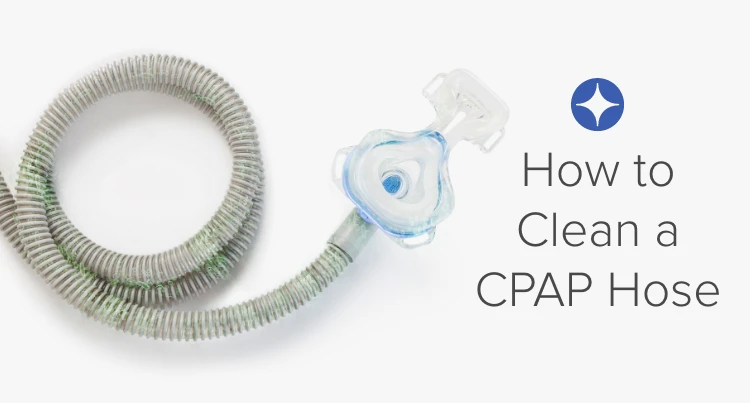
Understanding how to clean a CPAP hose is essential for anyone using CPAP therapy. Keeping your CPAP hose clean ensures both optimal hygiene and the continued effectiveness of your sleep therapy. Over time, dust, moisture, and bacteria can build up in the hose, potentially impacting your health and the quality of your sleep. This guide offers an in-depth look at the necessary supplies and a step-by-step process for "How do you clean a CPAP hose effectively?". Additionally, you'll discover valuable maintenance tips and learn how to avoid common cleaning mistakes. By adhering to these practices, you can maintain your CPAP equipment in top condition, enhancing both comfort and therapy outcomes.
Essential Supplies for Cleaning Your CPAP Hose
To properly understand "How do you clean CPAP tubing", you'll need a few basic supplies:
- Mild, fragrance-free soap or detergent (avoid antibacterial or oily/scented soaps—these may harm the hose)1
- Warm (not hot) drinking-quality water (approximately 86 °F / 30 °C)1
- A clean sink, tub, or basin
- A CPAP hose brush or some kind of scrubbing tool to reach the inside of the hose
- A clean towel, drying rack or hose holder (somewhere for your hose to hang)
FAQs About Cleaning Your CPAP Hose
What are the steps to clean a CPAP hose?
Follow standard manufacturer instructions: unplug and disconnect the hose, wash inside and out with warm water and mild soap, rinse thoroughly, and hang to dry.1
How often should I clean my CPAP hose?
Leading brands like ResMed recommend weekly cleaning of the tubing1.
Can I use soap to clean my CPAP hose?
Yes — but only mild, non-fragrant detergents. Avoid antibacterial soaps, bleach, alcohol, scented cleaners, or essential oils, as these can damage the tubing material or leave harmful residues.1
What is the best way to dry a CPAP hose after cleaning?
After rinsing, hang the hose vertically in a well-ventilated area to air-dry completely. Avoid direct sunlight or heat sources, which may degrade the material.2
How often do I need to replace my CPAP hose?
- One leading manufacturer, ResMed, recommends replacing tubing every 3 months.1
- Verywell Health also advises replacement every 3 months for heated or standard tubing.3
Maintenance and Replacement Tips
- Inspect regularly: Watch for cracks, discoloration, or wear that may compromise hygiene or therapy effectiveness. If wear is visible, replace sooner.
- Avoid harsh cleaners: Stick to manufacturer-approved mild soap and water.
- Use a supplemental device to reduce 99.9% of bacteria**. If desired, use the FDA-cleared SoClean 3+ device.4
- Keep it dry: Ensuring the hose is completely dry before reconnecting helps prevent fungal growth and "rainout" (internal condensation buildup).5
- Follow replacement schedules: Regular replacement keeps your CPAP performing effectively and safely.
Step-by-Step Summary: How to Clean a CPAP Hose
Step 1: Gather your supplies
Mild soap, warm (≈86 °F) water, basin, and a towel or rack.
Step 2: Disconnect the hose
Unplug the CPAP machine and detach the hose from both the mask and the machine.
Step 3: Wash with warm, soapy water
Submerge and swish the hose inside and out using the mild soap.
Step 4: Rinse thoroughly
Flush with clean, warm water until all soap residue is removed.
Step 5: Dry completely
Hang the hose vertically in a ventilated area (not in direct sunlight or heat) until fully dry.
References:
- ResMed, How to Clean Your CPAP Equipment
- Fisher and Paykel Health, How to Properly Clean CPAP Equipment
- Verywell Health, How Often Should You Replace CPAP Equipment and Supplies?
- Food and Drug Administration, Do You Need a Device That Claims to Clean CPAP Machines?
- SoClean, CPAP Rainout: How to Manage Water in the Tube and Keep Your CPAP Clean




